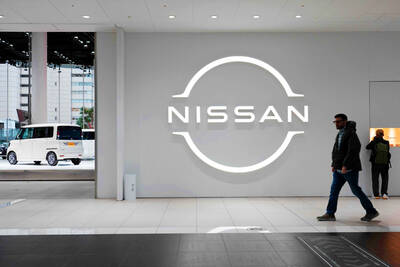The New Taiwan dollar on Friday rose against the US dollar, gaining NT$0.070 to close at NT$30.236, an increase of 0.2 percent from NT$30.302 a week earlier.
Turnover totaled US$987 million during the trading session.
The greenback opened at the day’s high of NT$30.250 and moved to a low of NT$30.170 before rebounding.
Elsewhere on Friday, the US dollar edged higher, but remained on track for its biggest weekly decline in four years, as trillions of US dollars of stimulus efforts by governments and central banks amid the COVID-19 pandemic helped temper a rout in global markets.
The US dollar has this month surged amid a drive for US dollars by investors trying to get their hands on the world’s most liquid currency.
However, big government spending pledges, including a US$2.2 trillion US package, and coordinated efforts by central banks worldwide to increase the supply of US dollars have supported a rally in other major currencies.
An unprecedented jump in US jobless claims on Thursday underscored the coronavirus’ effects on the economy, further weakening the US dollar.
The greenback on Friday gained 0.49 percent against a basket of currencies. It was on course for an about 2.57 percent fall for the week — its biggest weekly decline since February 2016.
Currency markets have been volatile. Last week, the US dollar index racked up its biggest weekly gain since the 2008 financial crisis.
“What we are seeing is abating stress in the money markets. Action by central banks has been successful so far and a shortage of [US] dollars has been taken of the table,” Commerzbank AG head of foreign exchange and commodity research Ulrich Leuchtmann said.
After this month’s large price swings, investors are likely to be especially active in rebalancing their books for month and quarter-end.
The Global Foreign Exchange Committee on Thursday warned that the coming few sessions could be volatile, as market participants execute larger-than-normal trades as part of this process.
Against the yen, the US dollar on Friday fell 0.71 percent to ¥108.80, as Japanese investors and companies repatriated funds before their fiscal year ends next week.
The euro fell 0.66 percent against the greenback to US$1.0955.
“Now that the surge in demand for [US] dollars overseas has been met by the Fed’s new improved swap lines, economic and medical fundamentals are taking over,” BDSwiss Group head of investment research Marshall Gittler said in a note.

PERSISTENT RUMORS: Nvidia’s CEO said the firm is not in talks to sell AI chips to China, but he would welcome a change in US policy barring the activity Nvidia Corp CEO Jensen Huang (黃仁勳) said his company is not in discussions to sell its Blackwell artificial intelligence (AI) chips to Chinese firms, waving off speculation it is trying to engineer a return to the world’s largest semiconductor market. Huang, who arrived in Taiwan yesterday ahead of meetings with longtime partner Taiwan Semiconductor Manufacturing Co (TSMC, 台積電), took the opportunity to clarify recent comments about the US-China AI race. The Nvidia head caused a stir in an interview this week with the Financial Times, in which he was quoted as saying “China will win” the AI race. Huang yesterday said

Nissan Motor Co has agreed to sell its global headquarters in Yokohama for ¥97 billion (US$630 million) to a group sponsored by Taiwanese autoparts maker Minth Group (敏實集團), as the struggling automaker seeks to shore up its financial position. The acquisition is led by a special purchase company managed by KJR Management Ltd, a Japanese real-estate unit of private equity giant KKR & Co, people familiar with the matter said. KJR said it would act as asset manager together with Mizuho Real Estate Management Co. Nissan is undergoing a broad cost-cutting campaign by eliminating jobs and shuttering plants as it grapples

The Chinese government has issued guidance requiring new data center projects that have received any state funds to only use domestically made artificial intelligence (AI) chips, two sources familiar with the matter told Reuters. In recent weeks, Chinese regulatory authorities have ordered such data centers that are less than 30 percent complete to remove all installed foreign chips, or cancel plans to purchase them, while projects in a more advanced stage would be decided on a case-by-case basis, the sources said. The move could represent one of China’s most aggressive steps yet to eliminate foreign technology from its critical infrastructure amid a

MORE WEIGHT: The national weighting was raised in one index while holding steady in two others, while several companies rose or fell in prominence MSCI Inc, a global index provider, has raised Taiwan’s weighting in one of its major indices and left the country’s weighting unchanged in two other indices after a regular index review. In a statement released on Thursday, MSCI said it has upgraded Taiwan’s weighting in the MSCI All-Country World Index by 0.02 percentage points to 2.25 percent, while maintaining the weighting in the MSCI Emerging Markets Index, the most closely watched by foreign institutional investors, at 20.46 percent. Additionally, the index provider has left Taiwan’s weighting in the MSCI All-Country Asia ex-Japan Index unchanged at 23.15 percent. The latest index adjustments are to